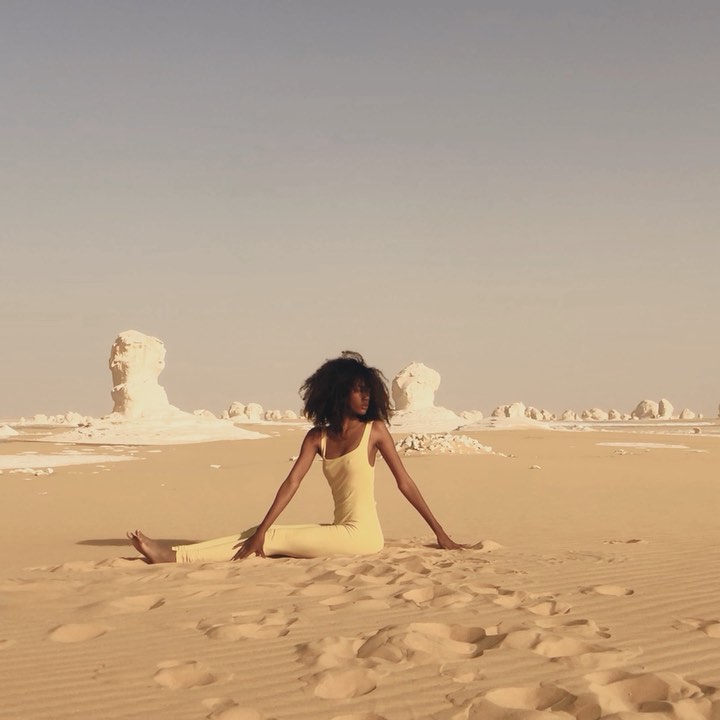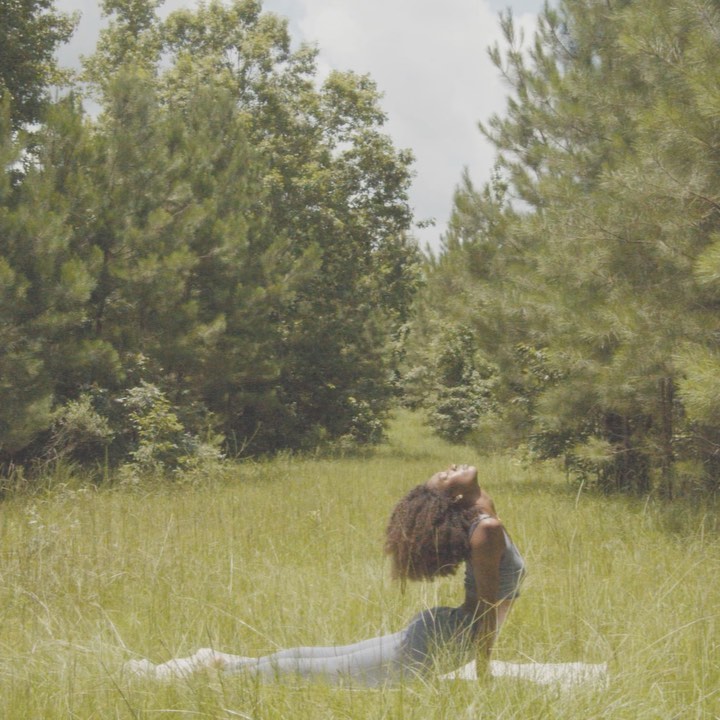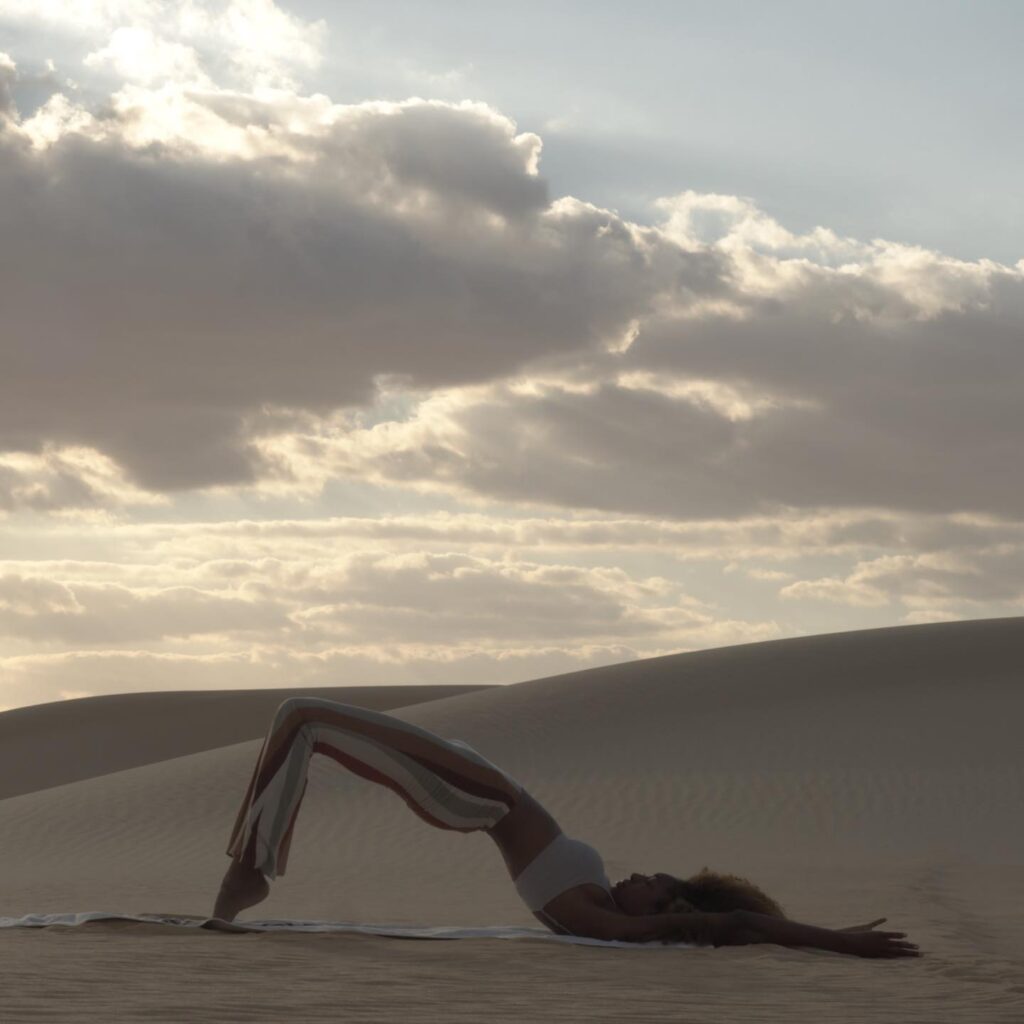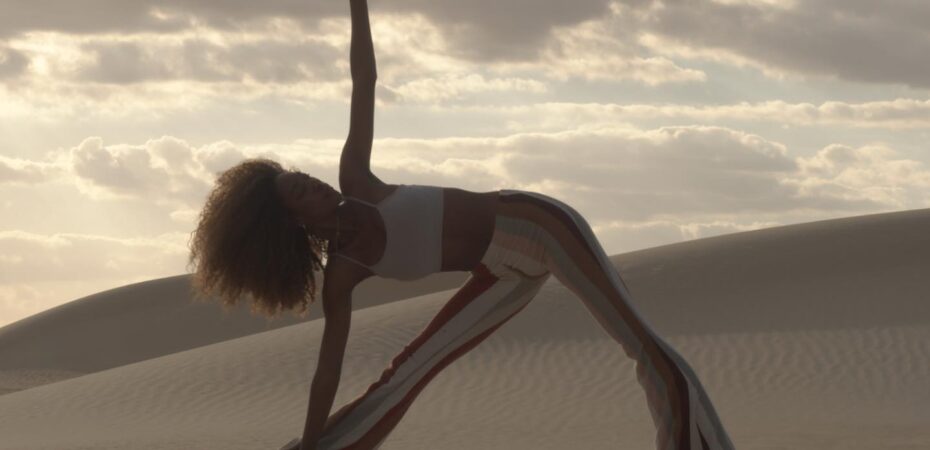Kemetic yoga, also known as Smai Tawi, has gained significant popularity in West Africa. I joined a class to see what all the hype was about. Chop sits down with Sarah Wes and Ebony Ka to discuss the emerging popularity and its significance.
I am lounging in a trendy green gym, surrounded by chill vibes and ambient tunes, as I stretch on my belly to touch my shoulders with my feet. This merging of stretch and breath means I’m engaging in the art of Kemetic yoga.
I attended classes with Ebony Ka and Sarah Wes, trained instructors in Kemetic yoga, to learn first-hand about the practice. The flow sequences of Indian and Kemetic yoga were similar, but the movements had different names. Instead of downward dog, in Kemetic yoga, it is referred to as the pyramid.

These differences in names come from Kemetic yoga’s origin in ancient Egypt and are one of its differences from Indian styles of yoga. Unlike Indian yoga, this practice focuses on breathing with each movement. I found this helpful as someone who holds their breath, especially when exercising. It allowed me to become one with my breathing and consciously think about it.
An increased focus on breathing can lead to a calmer mental state, improved oxygen intake, and strengthened mind-to-body connection. Every pose in Kemetic yoga is designed to increase mindfulness, and each pose and technique is significant for practitioners.
For me, the Geb Pose stands out because it offers benefits for my spine. The pose involves sitting cross-legged, bum on the ground with a straight back. Slowly, you twist side to side, aiming to feel the breathing in your back and the stretch.
Sarah found my choice amusing, adding a light-hearted touch to our chat. “Geb Pose, huh? That’s a good one,” she chuckled. On the other hand, Sarah prefers the peaceful “Sleeping Sphinx” pose. This pose involves sitting with your knees and feet tucked under whilst you lean forward, reaching into the cosmos. Meanwhile, Ebony swears by the power of Kemetic Breath, emphasising its importance in her practice. These personal favourites shed light on the diverse experiences within the Kemetic yoga community.

During the session, I felt tension leaving my body, and my thoughts turned inward, reflecting on my day and my goals. “When practising Kemetic yoga, you are embracing a gentleness that we so often ignore,” says Ebony.
Throughout our session, the cosmos is mentioned; Sarah explains that “we are focusing on our pyramidal energy, the neck and lower back. “These energies are aligning with the cosmos, bringing balance to us.”
In Egyptian practice, these energies are linked with Heru (the god of the sun) and Sebak (the god of nature). However, as the practice came to West Africa, there was no focus on gods; instead, West Africans connected the practice to their ancestors and centring themselves.
There is still little awareness in the West about Kemetic Yoga; however, we are seeing an increase in interest thanks to instructors like Ebony, who are bringing the practices outside of Africa. Ebony says, “Kemetic Yoga is the meeting of West African culture and spirituality with physical well-being and mental clarity.”
Sarah says, “The practice uses physical postures, controlled breathing, and meditation to achieve a balance between the body, mind, and spirit.”

“The practice seeks to connect individuals with the divine and cosmic energies, drawing from the symbolism and spiritual principles.” The unique element of this yoga style comes from its philosophical beliefs, as the goal of Kemetic yoga is to influence energy flows and bring enlightenment.
Ebony learnt about Kemetic yoga when visiting her family in Mali. “I had recently been diagnosed with sickle cell and was looking for something to elevate my pain,” she says. “A friend recommended that I try Kemetic yoga, and the experience was so eye-opening.”
“I was able to relax my body and help my blood circulation, but I also found stillness in myself, which took my worries away.”

After taking the classes, Ebony learned Kemetic Yoga from the indigenous Dogon people. “They have preserved and transferred the original culture of Kemetic, which involves moving at a slower pace and focusing on the feelings in one’s chakras [energy centres in the body] and mind rather than the stretch of the poses.”
The Dogon people are from Mali, and the practice has spread far across West Africa, with Kemetic yoga retreats in Ghana.
“Many practitioners, including myself, may incorporate elements of their cultural heritage into Kemetic yoga,” says Sarah. “This fusion allows for a unique and personalised approach to yoga that resonates with the West African’s cultural background and spiritual beliefs.”
Sarah holds virtual classes and travels around Africa, teaching Kemetic Yoga.
“I find it tailored toward the experience of black and brown individuals, allowing them to explore deeper into African spiritual traditions. Many contemporary yoga spaces ignore the history and significance of Kemetic yoga.”

Since completing her training, Ebony decided to bring the practice to London. She now provides Kemetic yoga classes in Sickle Cell wards around hospitals in London, passing on her experience to others.
“I want to help others in any way I can. So often, with diagnosis, people focus on just staying physically healthy, but with Kemetic Yoga, you have both physical and mental health,” she says.
“Even if they may not provide relief from pain for the Sickle Cell patients, I at least hope it can brighten their day.”

